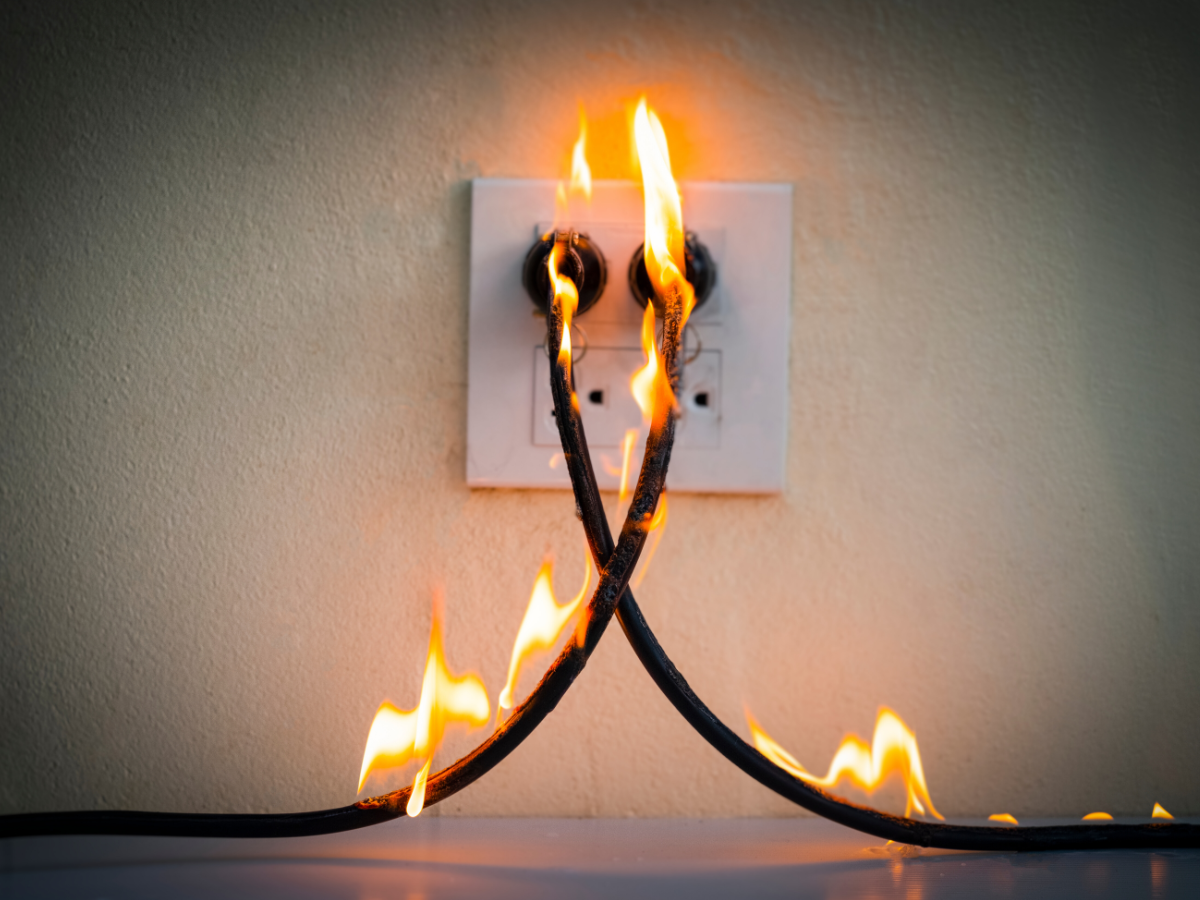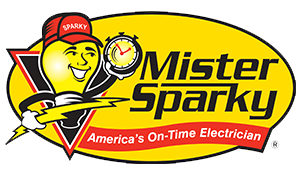 A hot outlet usually means circuit overload, loose wiring or a failing outlet. While a slight warmth can be normal with some devices, a hot outlet is dangerous and should be inspected by a licensed electrician immediately.
A hot outlet usually means circuit overload, loose wiring or a failing outlet. While a slight warmth can be normal with some devices, a hot outlet is dangerous and should be inspected by a licensed electrician immediately.
In this article, we’ll examine why your electrical outlet gets hot, along with what you should do about it.
Is It Normal for an Outlet to Feel Warm?
Electrical resistance creates a tiny amount of heat generation. Therefore, if your outlet feels slightly warm, it’s probably okay. Your in-home transformers help convert power from high voltage to low voltage and vice versa. Items such as chargers and small appliances rely on transformers to work properly.
However, if your outlet feels uncomfortably hot to the touch, it’s telling you there is a problem. That’s why the rule of thumb for outlets is if it’s too hot to touch, then it’s not safe.
Common Causes of Hot Electrical Outlets
There are several possible causes for a hot electrical outlet, including improper installation and damaged electrical components. In this section, we’ll take a closer look at five of the most prevalent reasons why outlets heat up.
Circuit Overload
A circuit overload can happen when you have too many high-watt devices on one outlet or circuit. Pay especially close attention when you plug in a hair dryer or space heater, as they’re among the most common culprits.
Loose or Damaged Wiring
Having a loose terminal can increase resistance and generate heat. Additionally, frayed, worn or damaged wires can do the same thing.
Worn or Faulty Outlets
Old receptacles can degrade, thereby causing overheating. This happens in two different situations: Internal component failure or poor connections. To avoid this issue in the future, make sure your outlets are properly installed.
Backstabbed Connections
Backstabbed connections, also referred to as push-in wiring, provide a less secure connection method. This process involves wires that are pushed into the back, instead of traditional screw terminals. Backstabbed connections may include overheating or loose wires and should be replaced immediately.
Shared or Series Circuits
Your home’s power outlets should be wired in parallel circuits, rather than shared or series circuits. If shared or series circuits were used instead, your devices may not receive enough voltage to work properly. Unfortunately, series circuits can fail entirely, therefore making all devices sharing the circuit stop working.
Dangers of a Hot Outlet
 Whether your outlet is hot because of faulty wiring, loose connections or an overloaded circuit, the end result is always the same. The best way to resolve this issue, and avoid the following dangers, is to have a professional electrician repair or replace your outlets.
Whether your outlet is hot because of faulty wiring, loose connections or an overloaded circuit, the end result is always the same. The best way to resolve this issue, and avoid the following dangers, is to have a professional electrician repair or replace your outlets.
- Fire hazard – A hot outlet can ignite nearby materials.
- Shock or electrocution – The risk of suffering from electrocution or shock is especially high if wiring is damaged or exposed.
- Appliance damage – Excessive heat may cause internal component degradation, which could cause your appliances to stop working altogether.
What To Do Immediately if an Outlet Feels Hot
You’ve just unplugged your phone charger, and the outlet feels unusually warm. Rather than ignoring it, it’s vital to reach out to an electrician immediately. Use the following steps to keep your family safe.
1. Switch off the breaker powering the outlet.
2. Unplug all devices.
3. Do not reset or reuse the outlet.
4. Call a licensed electrician for inspection and repair.
How Electricians Fix Hot Outlets
After ensuring the power has been shut off to the affected circuit, an electrician will remove the cover plate and outlet. From there, they can tighten or replace wiring connections.
Conversely, they’ll install new outlets if components are degraded. Also, if you’ve got an older home, they’ll add dedicated circuits for heavy appliances. Additionally, they’ll upgrade breakers to modern AFCI/GFCI for safety.
How to Prevent Overheated Outlets
The most important thing you can do to prevent overheated outlets is to distribute the load. In other words, don’t overload outlets with too many devices.
Furthermore, replacing aging or faulty outlets promptly is a proven technique. Always use power strips with surge protection.
If you’ve got an older home, it’s also vital to upgrade your wiring. Doing this will enhance the performance of your appliances and prevent fire hazards.
Frequently Asked Questions (FAQs)
Why is my outlet hot when nothing is plugged in?
If your outlet is hot even when nothing is plugged in, you are likely experiencing a wiring or circuit design issue. Take action immediately by contacting a professional Daytona Beach electrician. Don’t delay, as a hot outlet is a fire hazard.
Can a hot outlet start a fire?
Yes, a hot outlet can absolutely start a fire. In fact, overheating is a top cause of electrical fires. Without immediate attention, your hot outlet could melt, create dangerous sparks or even cause a devastating house fire.
How hot is too hot for an outlet?
If touching your outlet leaves you instantly uncomfortable, then it’s too hot to remain operational. Are you still unsure? Take a temperature reading of the outlet. If it meets or exceeds 80°F/27°C above the room temperature, you’ve got a serious electrical issue. Call for help right away.
Should I replace a hot outlet myself?
Absolutely not. A hot outlet should only be replaced by a licensed electrician. Hidden wiring issues cause several risks, including electric shock and fire hazards.
Don’t Ignore a Hot Outlet: Call Mister Sparky
 Remember: A hot outlet equals an urgent safety hazard. Therefore, take immediate action by powering off, unplugging and calling a licensed Daytona Beach electrician. You can also avoid issues with warm outlets altogether with smart usage and expert outlet repair.
Remember: A hot outlet equals an urgent safety hazard. Therefore, take immediate action by powering off, unplugging and calling a licensed Daytona Beach electrician. You can also avoid issues with warm outlets altogether with smart usage and expert outlet repair.
Fortunately, Mister Sparky is Daytona Beach’s on-time electrician. Don’t put up with any malarky! Contact our experienced professionals right away.